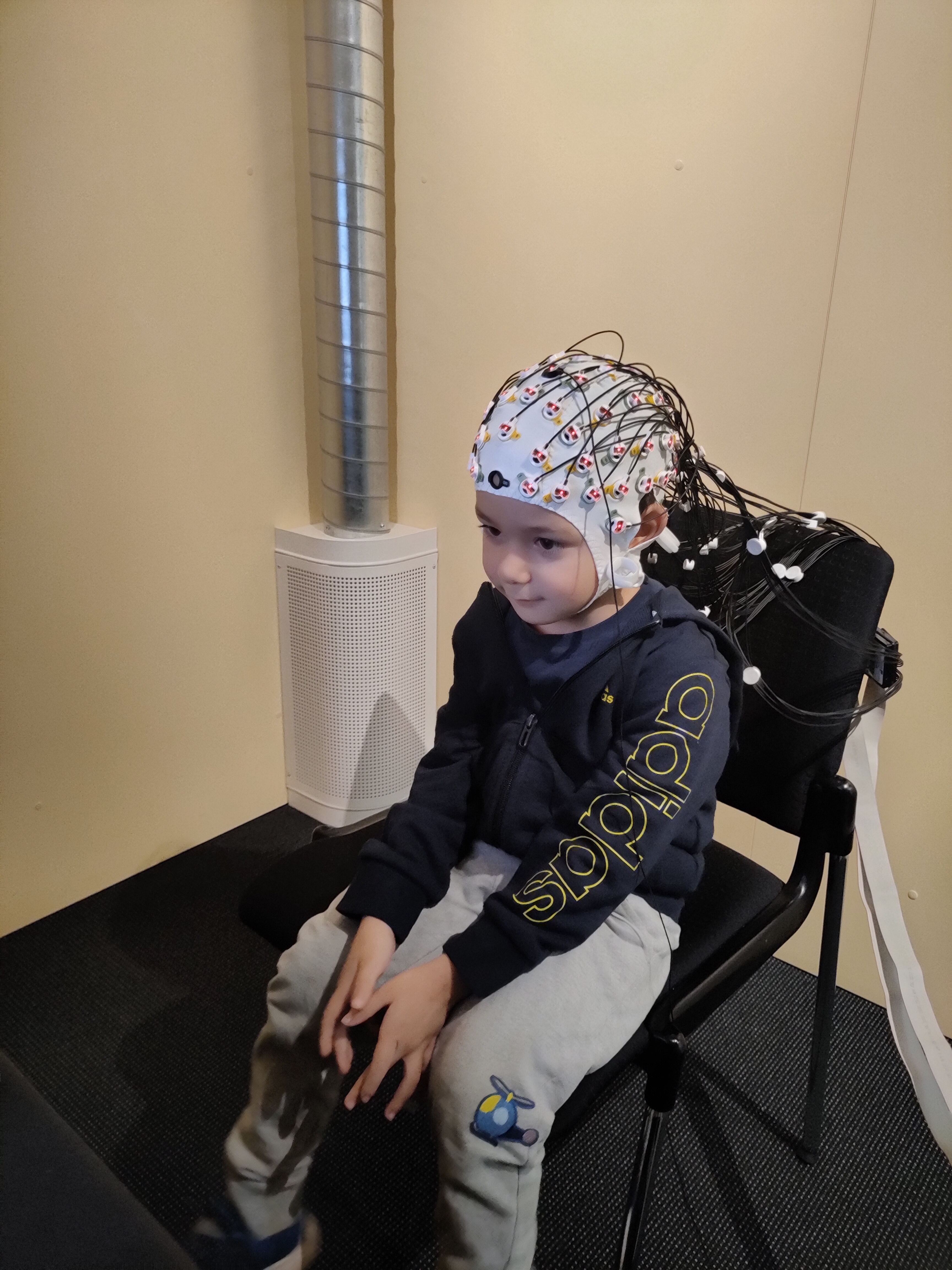EEG

In our brains, tiny nerve cells called neurons constantly transmit weak electromagnetic signals in order to communicate with each other. Different regions of our brains need to communicate with each other depending on what we are currently doing, seeing or hearing. So these signals change in different areas and at different times. An electroencephalogram (EEG) uses little sensors on the surface of a person’s head to measure where and when these signals change. Similar to a thermometer, which can measure and display a temperature, the EEG’s sensors measure the brain’s signals and can then be processed using computer software and considered in relation to what the person has observed and heard. This method is particularly popular in studies using children, as it makes their thinking and the development of thinking ‘visible’.
For research of the Department of Developmental Psychology: Infancy and Childhood, we use particularly child-friendly caps to which the electrodes are attached. The caps come in many different sizes to ensure that they fit well onto the head. To measure the faint signals on the surface of the head well, a gel is applied to the electrodes between the cap and the scalp. The gel is harmless and can be washed out with water at the end.